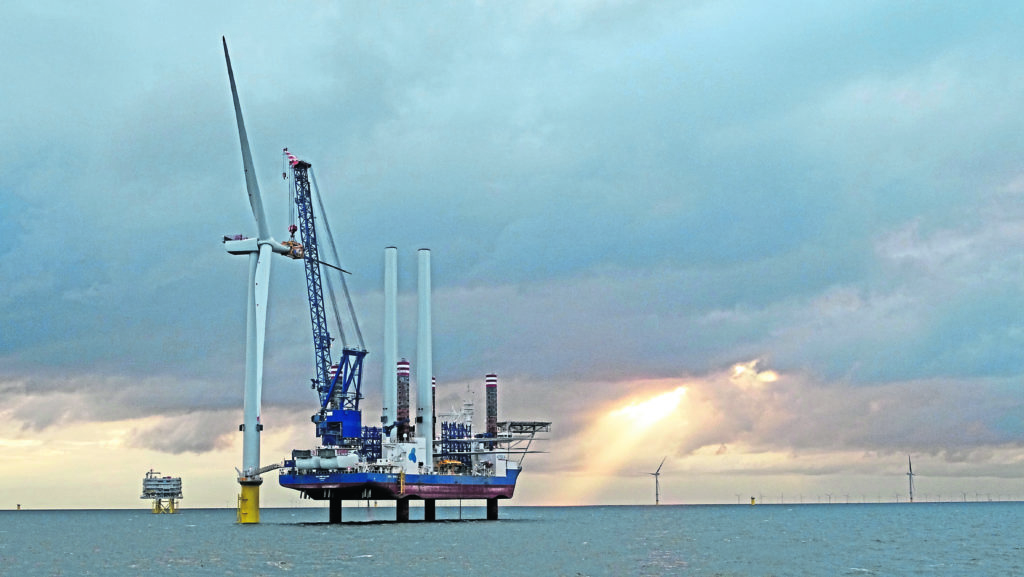
The UK’s biggest power cut in more than a decade has set alarm bells ringing – and the peal is being heard far beyond the immediate causes of the episode.
The UK Government has ordered an inquiry. So too has Ofgem, in the light of National Grid’s preliminary report, which suggested lightning triggered events that hit a million homes in England and brought hundreds of trains to a halt.
A bolt of awareness has hit government. Security of supply is not guaranteed and the
public is less interested in why things went wrong than in holding accountable those entrusted with keeping the lights on.
Power was lost from two generators – one at Little Barford gas plant and Hornsea One offshore wind farm. That took 5% out of the system. Power was quickly restored but it took hours to get trains going.
Whatever the explanation, there is good reason for a much wider ranging assessment of how resilient our power network is and, critically, is likely to become.
It is ironic that the question of intermittency from renewables is back on the political agenda since the August 9 episode as, whatever the reason for Hornsea One’s outage, it wasn’t lack of wind.
That is why it is essential to ask wider questions about resilience. Do we have enough power to cope when the wind does not blow and the sun does not shine?
The pace of change is rapid and – if I may be so immodest – a tribute to policies pursued in the early part of last decade. Incentivising renewables generation was crucial.
A decade ago, coal plants generated a third of the UK’s electricity, but in the first half of 2019, it was only 3% and, on 18 days, nothing at all.
I’m writing this on a windy day and a check on the Gridwatch site confirms the pattern – 29% of the UK’s electricity is coming from wind. Gas is at 36%, nuclear at 19% and coal at just 2%. Most of the rest is imported via interconnectors.
However, when the wind is not blowing, there still has to be enough back-up. That is the real resilience issue the UK grid faces.
Professor Dieter Helm, a reliable commentator, drew three conclusions.
First, security of supply is “a much more valuable commodity than even a couple of years ago” as the digital economy and our infrastructure depend on it.
Second, “most renewables power is not firm power” and the logic of mandating more renewables is also “more equivalent firm power”.
Third – and critically – Ofgem is “currently determining how much investment, and therefore resilience, the networks will be allowed to build in. More resilience means more investment and capital maintenance cost”.
Although these events took place in the south, nobody in Scotland should be complacent. The closure of Longannet and run-down of our nuclear industry will turn us into heavy net importers with major reliance on grid connectivity with the rest of the UK.
Where will this resilience come from? The easy answer is to rely on interconnectors with post-Brexit Europe without regard to politics or cost, far less the delicate question of how the power is generated.
Another answer lies in storage. One option must be Pumped Storage Hydro. This technology provides 95% of electricity storage worldwide and could breathe new life into a great Scottish industry.
Nothing is that simple though. In the same week as the power cuts, Highland Council’s planning committee rejected its officials’ advice not to object to a Pumped Storage scheme on Loch Ness.
There were repeated references to the near-failure of a 180-year-old dam at Whaley Bridge in the Peak District but none to the scores of proud hydro projects built in the Highlands in more modern times.
The apocalyptic view was taken to extremes by Inverness Councillor Andrew Jarvie who feared “damage, death and destruction” could “wipe out entire Highland communities”.
By that yardstick, no hydro scheme would ever have been built.
The north has seen plenty windfarms with few returns in terms of jobs or manufacturing. If renewables have created a requirement for resilience that can also offer economic opportunities, surely these should not be spurned.
Brian Wilson is a former UK energy minister
Recommended for you
